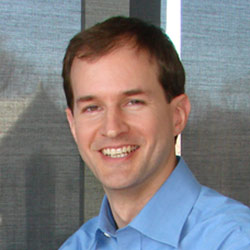Creating Algorithms to Build International Research Teams
McCormick Global Initiatives hosted a workshop to pair scientists from four international partner universities
Finding research partners from universities based in different countries can have immense benefits. Scientists can collaborate with investigators from dissimilar backgrounds, bringing new perspectives, new resources, and new ideas to a project. The problem is that identifying new collaborators can be challenging, the coordination of face-to-face meetings can be logistically complex, and travel can be prohibitively expensive. Even if that’s accomplished, there is still a chance that the right people just happen to not connect.
A virtual initiative spearheaded by Northwestern Engineering’s Global Initiatives is working to break down that initial barrier to forming international collaborations, helping forge productive teams as naturally as possible, while also providing valuable insight into novel data-driven strategies for effective team-building.

In October, Matthew Grayson, the director of McCormick Engineering Global Initiatives, hosted the Four Corners Virtual Workshop on Sustainability, bringing together four universities with mutual memoranda of understanding – Northwestern, Tel Aviv University (TAU), National Taiwan University (NTU), and the University of Hamburg (UH) – for small-workgroup research brainstorming sessions. The gathering was supported by the new Sustainable, Resilient, Responsible Global Minerals Supply Chain (SuReMin) center helmed by Jennifer Dunn, professor of chemical and biological engineering at the McCormick School of Engineering, and funded by a National Science Foundation grant.
To group workshop attendees for the research brainstorm sessions, Grayson tested a new match-making algorithm developed by Noshir Contractor, Jane S. and William J. White Professor of Behavioral Sciences in Industrial Engineering and Management Sciences, professor of communication studies, and professor of management and organizations; and Diego Gomez-Zara (TSB PhD ’21), a former student of Contractor’s and now an assistant professor in computer science and engineering at the University of Notre Dame.
The algorithm created groups of between 3-6 people, generating 47 research collaborations on dozens of topics between combinations of researchers across all participating universities, tackling challenges such as food expiration, efficient power generation, and water cleanliness, among others.
These teams – comprised of researchers from around the globe – may never have come together if not for the initiative.
“This is a significant first step, but not the end of the story,” said Grayson, professor of electrical and computer engineering. “This is the beginning of a process.”
The idea for this initiative was planted during the COVID-19 pandemic when Grayson was hosting virtual poster sessions with graduate researchers from UH and NTU. Around that time, he had coffee with friend Elie Rekhess, a renowned Middle East historian and visiting professor in Northwestern’s Weinberg College of Arts and Sciences, who earned his PhD at TAU. Rekhess suggested holding a multi-institutional meeting with faculty members to tackle a global problem like sustainability.
Subsequently, Grayson met with Eric Perreault, then the associate dean for research administration and oversight at Northwestern Engineering and now the University’s vice president for research. Concerned that most large-scale virtual events tend to have short shelf lives, Perreault directed Grayson to brainstorm with Contractor about first surveying participants and then using data science algorithms to nucleate many smaller, more effective research group teams.
Known for his research into team building and how groups function, Contractor connected with Grayson and guided him to Gomez-Zara. Together, Gomez-Zara, Grayson, and the Global Initiatives staff including Eunae Jo and Stephen Pedersen, created a 10-minute survey for researchers to fill out, asking them to list their scientific interests, expertise, and interest areas for new collaborations, along with gender and other demographic information. Gomez-Zara then iterated the algorithm to create workgroups which the Global Initiatives team then scheduled for individualized one-hour meetings when all four time zones across the globe could simultaneously meet – spanning the “four corners” of the globe.
This is a significant first step, but not the end of the story. This is the beginning of a process.
“The idea was to see how we can automate this process, especially considering all the data that was behind this project,” Gomez-Zara said. “We created an algorithm to identify which teams had common specialist expertise so that individuals from different schools could work together.”
Team building is a complicated task, and creating teams of people from different cultural backgrounds is even more challenging. In science, it also helps to unite people who have different experiences and viewpoints, which could lead to increased impact of the research, while challenging all participants in a healthy debate sparked by diverse creative viewpoints.
That factor was at the forefront for both Grayson and Gomez-Zara, and creating diverse teams this way could have further implications moving forward and outside of just academia.
“Most people look for familiar people, similar people, and that creates a lot of segregation that excludes a lot of people because they don't have the connections,” Gomez-Zara said. “Right now, given the increase of artificial intelligence, we want to see how these systems can help us organize better teams.”
Grayson is optimistic about what the initiative could produce and is already planning a virtual seminar series for the coming spring that will showcase several of the collaborations formed at the Four Corners workshop.
“If out of all these collaborations, we’re able to get one faculty member to visit from one of these institutions over the next year that would not have otherwise visited, or, better yet, if four or five of the research collaborations actually reach fruition with co-authored papers or co-advised PhD students, it would be a ringing success in my book because we are creating collaborations,” Grayson said. “Once you've created a collaboration, things snowball from there.”